Photo Advice
for Travelers on Safari in Africa
by Jon Hill
(originally
written April 2004, updated August 2005)
return to articles page
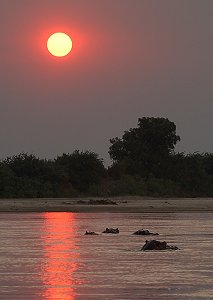 On
a recent trip to Tanzania, I observed many people taking photos. Some
of them had clearly done their homework and were well-equipped. Some
were sad because they realized what a photographically-rich place
they had come to and wished they had brought a better camera. Others
seemed oblivious to the capabilities (or incapabilities) of their
cameras and were shooting away happily producing garbage.
On
a recent trip to Tanzania, I observed many people taking photos. Some
of them had clearly done their homework and were well-equipped. Some
were sad because they realized what a photographically-rich place
they had come to and wished they had brought a better camera. Others
seemed oblivious to the capabilities (or incapabilities) of their
cameras and were shooting away happily producing garbage.
This article
is meant to help anyone interested in being better prepared for taking
photos on safari. You want images that you will be happy to look at
and share when you get back home. After all, the best souvenir you
can get on safari is not some wood carving or piece of cloth, but
a great story. And pictures make stories so much more interesting!
Q:
What kind of camera should I use?
A: This depends on lots of factors, but I'll only consider two. The
first consideration is size. What are you willing or able to carry?
Visitors to Africa from most of the world may only be allowed 20kg
of baggage, so bringing 15 kg of camera equipment isn't an option
(unless you want to wear the same underwear for two weeks and be unpopular
to those downwind in the Land Rover). If you want to travel light,
then get something compact with a good zoom lens (more on lenses later).
If you are willing to take the bulk, I'd recommend a Single Lens Reflex
(SLR) camera able to take interchangeable lenses. The best option
is to take both. Use the SLR in the vehicle and take the compact when
you make that strenuous climb 1500ft straight up to see the chimps.
It's nice to have a second camera in case one breaks, too.
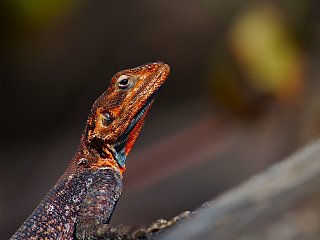 The
next consideration should be the choice of film or digital. I've used
both and now that I've used digital I'll never go back to film. Many
people on safari go only once in their life. They spend a lot of money
to experience the African bush and collect some exciting stories.
A big part of relating those stories to their jealous friends and
family back home is showing pictures. Film has the distinct disadvantage
of giving no feedback while in the bush. You are taking pictures but
you have little confidence in what you are really getting. You are
plagued with questions. Is my exposure right? Is my camera working
properly? Are my pictures sharp? Did I catch the lunge of the croc
as it went for the wildebeest? Digital cameras, on the other hand,
let you see what you have right away. You can adjust what you are
doing and sleep better at night (unless the hippos are serenading
you) knowing you got the shot. For all these reasons, I can now only
recommend a digital camera for safaris. Most pros have switched to
digital. If you haven't, the time has come.
The
next consideration should be the choice of film or digital. I've used
both and now that I've used digital I'll never go back to film. Many
people on safari go only once in their life. They spend a lot of money
to experience the African bush and collect some exciting stories.
A big part of relating those stories to their jealous friends and
family back home is showing pictures. Film has the distinct disadvantage
of giving no feedback while in the bush. You are taking pictures but
you have little confidence in what you are really getting. You are
plagued with questions. Is my exposure right? Is my camera working
properly? Are my pictures sharp? Did I catch the lunge of the croc
as it went for the wildebeest? Digital cameras, on the other hand,
let you see what you have right away. You can adjust what you are
doing and sleep better at night (unless the hippos are serenading
you) knowing you got the shot. For all these reasons, I can now only
recommend a digital camera for safaris. Most pros have switched to
digital. If you haven't, the time has come.
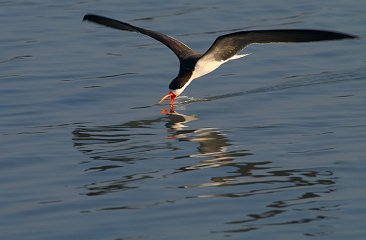 Q:
What types of lenses do I need?
Q:
What types of lenses do I need?
A: If you have chosen
a compact digital camera, get something with 10x zoom and you'll be
getting good shots. (This often gives the equivalent of 300 to 400mm
in 35mm film terms.) The only drawback to having this much reach is
that you will struggle to get sharp photos if the camera is not on
a tripod or a beanbag. For that reason, I would highly recommend getting
a camera with image stabilization (aka vibration reduction, steady
shot, etc.). This overcomes problems of blurry pictures due to camera
shake, but it will not help freeze the action of your subjects. For
that, you need to increase your shutter speed. If your camera has
an action setting, use it.
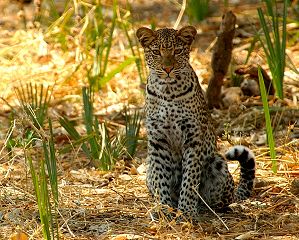 If
you have chosen a Digital SLR, then I would recommend taking at least
two lenses. If I could only take two they would be a wide angle to
short telephoto zoom, and a short telephoto to long telephoto zoom.
Many of the new affordable DSLRs come with lenses like 18-55 or 18-70mm
zooms. These are fine for catching those beautiful landscapes and
for when the cheetah climbs on the Land Rover. The second lens should
cover the range from 70 or 80mm to 300 or 400mm. I'm a fan of Nikon
equipment and one of my favorite safari lenses is the Nikkor 80-400
VR lens. It offers an awesome range of zoom and the vibration reduction
built into the lens makes all the difference when you round a corner
and only have 5 seconds to get a shot off without any camera support.
Canon makes a 100-400mm IS lens that is also very nice. Of course
these lenses are expensive. Cheaper alternatives are 70-300 zooms
without image stabilization (consider using a beanbag for support)
and lenses from 3rd party manufactrers like Tamron or Sigma.
If
you have chosen a Digital SLR, then I would recommend taking at least
two lenses. If I could only take two they would be a wide angle to
short telephoto zoom, and a short telephoto to long telephoto zoom.
Many of the new affordable DSLRs come with lenses like 18-55 or 18-70mm
zooms. These are fine for catching those beautiful landscapes and
for when the cheetah climbs on the Land Rover. The second lens should
cover the range from 70 or 80mm to 300 or 400mm. I'm a fan of Nikon
equipment and one of my favorite safari lenses is the Nikkor 80-400
VR lens. It offers an awesome range of zoom and the vibration reduction
built into the lens makes all the difference when you round a corner
and only have 5 seconds to get a shot off without any camera support.
Canon makes a 100-400mm IS lens that is also very nice. Of course
these lenses are expensive. Cheaper alternatives are 70-300 zooms
without image stabilization (consider using a beanbag for support)
and lenses from 3rd party manufactrers like Tamron or Sigma.
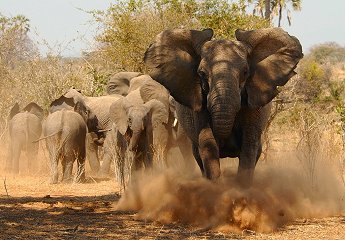 I
would really discourage the average photographer from using teleconverters.
These devices increase the focal length of your lenses but do so at
the expense of sharpness and the ability to autofocus in low light.
They work best with very expensive non-zoom lenses. If you do insist
on trying one, go for a modest 1.4X teleconverter and avoid the 2X
and 3X models.
I
would really discourage the average photographer from using teleconverters.
These devices increase the focal length of your lenses but do so at
the expense of sharpness and the ability to autofocus in low light.
They work best with very expensive non-zoom lenses. If you do insist
on trying one, go for a modest 1.4X teleconverter and avoid the 2X
and 3X models.
Finally, I
would also warn you to be wary of the "super-zooms". These
cover huge ranges like 28-200 or 28-300mm. Their optical performance
is compromised to offer such a range, at least in the current generation
of lenses.
Q:
What kind of film should I take?
A: Silly, digital cameras don't use film! You ARE using a digital
camera, right?
Q:
How many megapixels do I need?
A: Don't be fooled into thinking you need 8-megapixels to get sharp
photos. 3MP is plenty for making 8x10 inch enlargements. If you have
a choice of going for more megapixels or image stabilization, go for
the image stabilization. High numbers of megapixels really only pay
off in cameras with large sensors like DSLRs. And remember, more megapixels
means you will need more storage capability. This adds expense and
hassle. There are lots of nice cameras in the 4-6 megapixel range.
Personally, I think this is overkill. However, it is getting tough
to find cameras with nice feature sets in the 2-3 megapixel range
anymore. You can always get a 6 megapixel camera and then use it in
a 3 megapixel mode to save space on your memory cards.
If you get
a DSLR, the current models will all be in the 6 to 17 megapixel range,
with the affordable models (sub $2000 USD) around 6 or 8 megapixels.
The difference between 6 and 8 megapixels is hardly noticeable, so
I would make a decision based on other features and build quality
rather than megapixels. Nikon, Canon, Minolta, Pentax, and Olympus
are all making DSLRs in the 6-8 megapixels range and all do a nice
job.
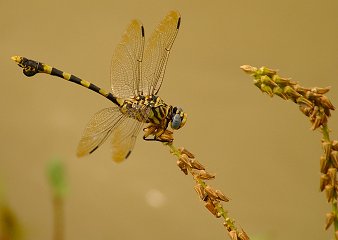 Q:
How do I charge batteries on safari?
Q:
How do I charge batteries on safari?
A: Excellent and important question! Current digital cameras have
improved their battery performance, but not to the point where one
charge will last a whole trip. The batteries in my DSLR will last
for about 2 days of safari shooting (300-500 shots per day). So charging
is an important issue to consider.
Most safari
camps have electricity, but often it is provided by a generator and
only on for limited hours. Take advantage of those hours. Having extra
batteries and extra chargers is very helpful because you can have
a set of batteries charging while you are out on a game drive, if
that is when the camp runs its generator. Most of East Africa uses
220 or 240V AC power, so check to see that your chargers can handle
this. The best chargers will have a label that says INPUT: 100-240V.
These are designed for international use. You will encounter various
plug styles, so be prepared that way as well. Ask your tour operator
before you go what you will need. Often safari camps will be able
to loan you a plug adapter, but not always.
Q:
How much digital memory should I take?
A: This depends on your megapixels, your camera file settings, and
how much you shoot. On a typical day of safari shooting, I'll take
about 400 photos. With a 6 megapixel camera in high quality mode,
a 1 gigabyte (1GB) card will hold about 150-200 JPEG images. I would
recommend taking at least two memory cards as these do occasionally
fail. You can choose to buy lots of memory cards, but this is expensive.
On my last safari, I took a notebook computer and unloaded my photos
each night. But notebooks are bulky. There are portable hard drives
with card reading capability available that are compact and allow
you to unload your cards. Some have nice color screens so you can
confirm your photos are safe before you format the card. The EPSON
P-2000 is a nice unit with an excellent screen, but it is expensive.
Do a Google search for "image storage device" and you'll
be able to get more information on these.
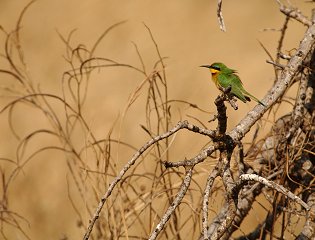 Q:
Is dust a problem?
Q:
Is dust a problem?
A: Yes. Keep your stuff in a bag that seals well. I also keep a cloth
that I can drape over my camera in my lap in the vehicle. I would
not recommend driving with your camera on a window mount. Take a blower
bulb and soft brush to clean grit off lenses. Use a cloth carefully.
Digital SLRs
have the unfortunate problem that dust can get inside the camera and
stick to the sensor. This means every photo will have faint spots
where the dust is. This dust can be cleaned by various methods. None
are easy to do, but if you are serious enough about your photos to
buy a DSLR, you should take the time to research the subject of sensor
cleaning. Personally, I like the products offered by www.visibledust.com.
Q:
How should I support my long lens in a vehicle?
A: Tripods are not all that useful. Window mounts are only useful
in some types of vehicles. I like to use the Safarisack
by Kinesis. You can fill it with almost anything (sand, beans,
rice) and it is fast and flexible. Hint: Fill it after you get to
your destination, as it can be heavy when full. You might also ask
if your safari tour operator provides beanbags in their vehicles.
Some do.
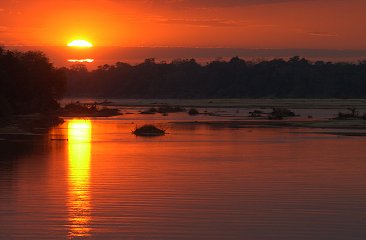 Q:
Do you have any tips for technique?
Q:
Do you have any tips for technique?
A: 1) When looking for new subjects, keep your camera in Program or
Auto mode. The sports or action mode is also useful. When you see
something, take a few shots, then start to use your camera's other
features to refine your photos. It's frustration to come across a
new scene, take photos, and then realize you forgot to set the camera
back to normal after adjusting for some strange light conditions at
the last photo op.
2) To get
your shutter speed up (to freeze motion), open up your aperture (go
to low f-numbers) or increase your film speed (aka ISO, aka sensitivity).
It's always a trade off. As a general rule, you should try to keep
film speed as low as you can and the aperture in the middle of the
range of values while still keeping your shutter speed up over 1/250th
if you can. On digital cameras you get a record of all this data with
every shot. Check it. Putting your camerea in Sports or Action mode
should maximize your shutter speed.
3) Avoid shooting
into the light. Look for the best shots to be on the side of the safari
vehicle away from the sun. Sit on that side if you can.
4) Keep looking
through your camera. Things happen fast and unpredictably. If you
aren't ready, you won't get the shot.
5) Read my
article on Composition.
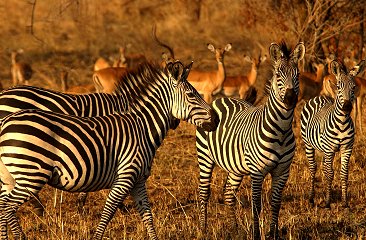 Q:
What do you use?
Q:
What do you use?
A: On my last safari, I took 90% of my photos with a Nikon D2X DSLR
and a Nikkor 300mm lens, sometimes with a 1.4x teleconvertor. Usually
my ISO was set to 400 so that could get sharp photos handheld. I tried
to use a beanbag whenever I could. I also use the Nikon 80-400mm VR
lens but I'm finding it is not as sharp on my 12.4 megapixel camera.
My other lenses were a 12-24mm zoom, a 17-55mm zoom, and a 50mm f1.8
prime. I do use a tripod on rare occasions when on safari. I prefer
Gitzo carbon fibre tripods and good ball heads like those made by
Kirk Enterprises. This equipment, along with extra memory cards, a
Nikon D70 for backup, portable harddrives, a notebook PC, chargers,
etc. cost over $14,000 USD and made my carry-on weigh over 20 kilos.
Fortunately the airlines and other theives didn't notice.
Q:
What are good compact digitals to take?
A: These change so fast I can't keep up. As I write this (August 2005),
I like the looks of the Panasonic DMC-FZ5. It has the features I like:
1) 12x zoom, 2) Image stabilization, 3) 5 megapixels (plenty), 4)
Quick operation, 5) reasonable price. Check Digital
Photography Review for reviews of this and other cameras.
Q:
Where should I go in Africa to get wildlife photos?
A: South Africa offers easy access, but many claim it is too touristy
and crowded, especially Kruger NP. Private game parks in South Africa
will vary widely. Kenya and northern Tanzania are also touristy but
less so and are the best places to see the big migrations (Masai Mara
and Serengeti). The Southern Circuit of Tanzania is much less visited
and offers more of a sense of untamed Africa, but transportation can
be longer and bumpier, or more expensive if you choose to fly. (If
you are up for it, try www.tanzaniasafaris.info).
Botswana, Zambia, Namibia, and other places have excellent game viewing,
but I have no personal experience with them.
Conclusion:
Taking photos on safari can be challenging and rewarding, frustrating
and exciting, disappointing and elating. Being prepared can make all
the difference. Hopefully this article has helped you think about
some of the important considerations before your trip. I'm happy to
add more information to this article, so keep the questions coming.
Try to make your questions specific if you can.

 On
a recent trip to Tanzania, I observed many people taking photos. Some
of them had clearly done their homework and were well-equipped. Some
were sad because they realized what a photographically-rich place
they had come to and wished they had brought a better camera. Others
seemed oblivious to the capabilities (or incapabilities) of their
cameras and were shooting away happily producing garbage.
On
a recent trip to Tanzania, I observed many people taking photos. Some
of them had clearly done their homework and were well-equipped. Some
were sad because they realized what a photographically-rich place
they had come to and wished they had brought a better camera. Others
seemed oblivious to the capabilities (or incapabilities) of their
cameras and were shooting away happily producing garbage.  The
next consideration should be the choice of film or digital. I've used
both and now that I've used digital I'll never go back to film. Many
people on safari go only once in their life. They spend a lot of money
to experience the African bush and collect some exciting stories.
A big part of relating those stories to their jealous friends and
family back home is showing pictures. Film has the distinct disadvantage
of giving no feedback while in the bush. You are taking pictures but
you have little confidence in what you are really getting. You are
plagued with questions. Is my exposure right? Is my camera working
properly? Are my pictures sharp? Did I catch the lunge of the croc
as it went for the wildebeest? Digital cameras, on the other hand,
let you see what you have right away. You can adjust what you are
doing and sleep better at night (unless the hippos are serenading
you) knowing you got the shot. For all these reasons, I can now only
recommend a digital camera for safaris. Most pros have switched to
digital. If you haven't, the time has come.
The
next consideration should be the choice of film or digital. I've used
both and now that I've used digital I'll never go back to film. Many
people on safari go only once in their life. They spend a lot of money
to experience the African bush and collect some exciting stories.
A big part of relating those stories to their jealous friends and
family back home is showing pictures. Film has the distinct disadvantage
of giving no feedback while in the bush. You are taking pictures but
you have little confidence in what you are really getting. You are
plagued with questions. Is my exposure right? Is my camera working
properly? Are my pictures sharp? Did I catch the lunge of the croc
as it went for the wildebeest? Digital cameras, on the other hand,
let you see what you have right away. You can adjust what you are
doing and sleep better at night (unless the hippos are serenading
you) knowing you got the shot. For all these reasons, I can now only
recommend a digital camera for safaris. Most pros have switched to
digital. If you haven't, the time has come. Q:
What types of lenses do I need?
Q:
What types of lenses do I need? I
would really discourage the average photographer from using teleconverters.
These devices increase the focal length of your lenses but do so at
the expense of sharpness and the ability to autofocus in low light.
They work best with very expensive non-zoom lenses. If you do insist
on trying one, go for a modest 1.4X teleconverter and avoid the 2X
and 3X models.
I
would really discourage the average photographer from using teleconverters.
These devices increase the focal length of your lenses but do so at
the expense of sharpness and the ability to autofocus in low light.
They work best with very expensive non-zoom lenses. If you do insist
on trying one, go for a modest 1.4X teleconverter and avoid the 2X
and 3X models.  Q:
How do I charge batteries on safari?
Q:
How do I charge batteries on safari? Q:
Is dust a problem?
Q:
Is dust a problem? Q:
Do you have any tips for technique?
Q:
Do you have any tips for technique? Q:
What do you use?
Q:
What do you use?